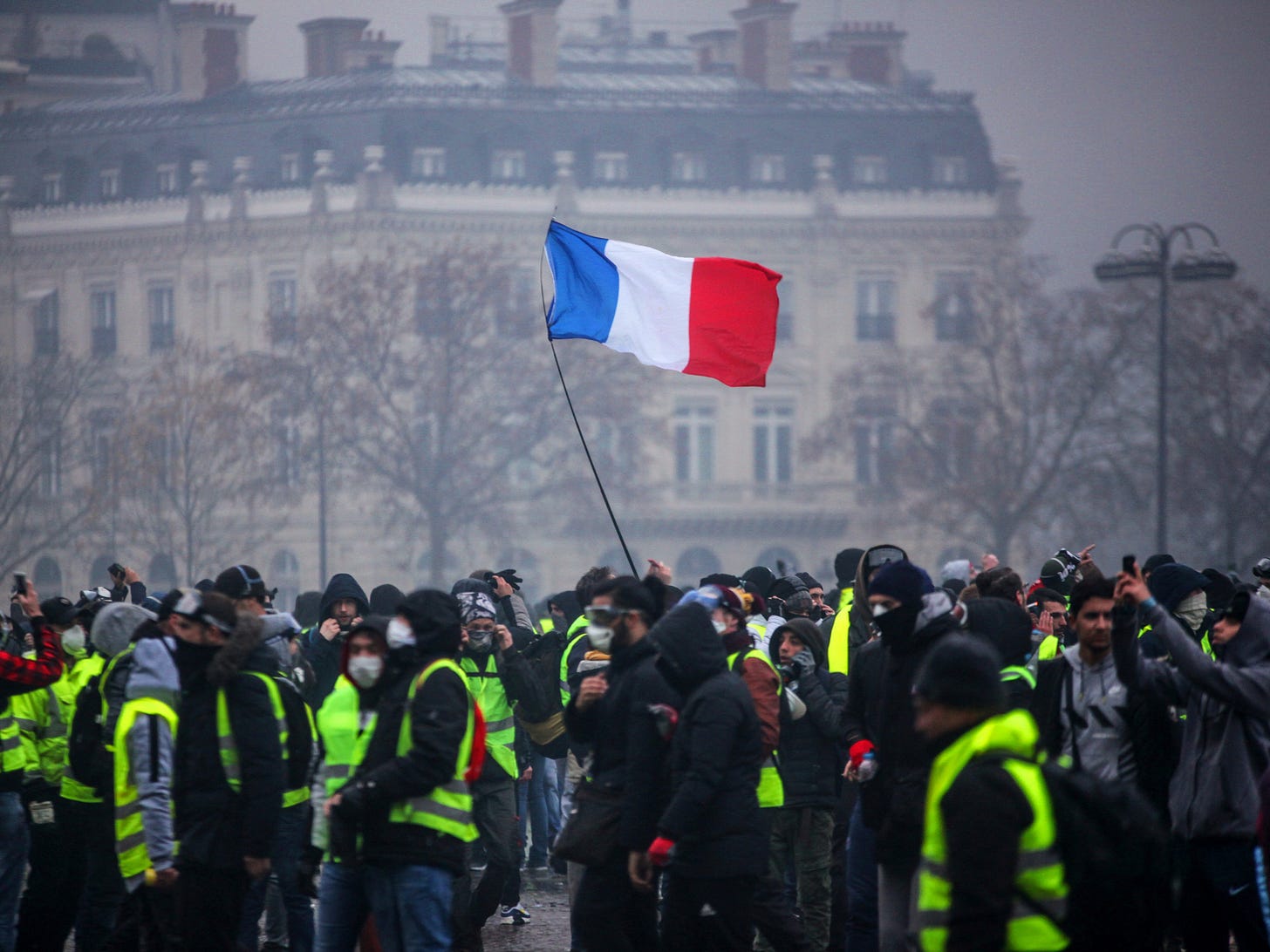The Hidden Class War and How the "Liberal-Libertarian" Alliance Divides to Conquer
Beneath the surface of seemingly democratic societies, a deeper conflict rages, engineered by a subtle alliance of power. This essay delves into how a ‘liberal-libertarian’ establishment maintains control by replacing fundamental economic struggles with manufactured social divisions, preventing the true solidarity of producers from emerging. The Yellow Vests movement, an organic uprising, inadvertently exposed this grand deception, revealing the unseen battleground where the soul of a nation is fought.
The Unseen Battleground of the Soul
In our increasingly fragmented societies, a deep unease persists, a silent recognition that the official narratives fail to capture the full scope of our collective predicament. What if this pervasive sense of division is not accidental, but the calculated outcome of a system designed to atomize and control? The Yellow Vests movement, far from being a mere tax protest, emerged as a visceral symptom of this profound societal illness—an intuitive uprising against an invisible enemy. It was a raw, leaderless expression of discontent, a collective recoil from an order that seemed determined to replace tangible realities with abstract constructs. This deep, intuitive rejection of manufactured divisions and economic detachment constitutes a primal scream from the heart of a society pushed to its limits.
As we navigate an era rife with cultural clashes and political polarization, it becomes imperative to understand the underlying architecture of power that benefits from such disunity. The conventional narratives of class struggle, often framed as worker versus employer, have served as sophisticated tools of misdirection, obscuring the true alliances and antagonisms that define our present moment. The Yellow Vests inadvertently provided a crucible for a new understanding of solidarity, forcing us to confront the true nature of the dominant forces shaping our world.
The Grand Deception: Producer Versus Parasite
A cornerstone of traditional left-wing politics has long been the inherent conflict between the salaried worker and their employer, particularly the small-business owner. This narrative, however, has often served as a deliberate and sophisticated deception, historically propagated by a certain strain of the left whose purpose was to designate the small business owner as the primary class enemy. This strategy, exemplified by figures like Arlette Laguiller in France, ultimately served the interests of the true power elite—the large corporations, the global financial institutions, and the bankers—by deflecting the anger of the working population onto an adjacent, often struggling, class of producer.
The Yellow Vests movement represented a powerful, organic rejection of this false conflict. On the roundabouts of rural and peri-urban France, the modern proletariat—small-wage earners, truck drivers, nurses, teachers—and the traditional middle class of artisans, shopkeepers, and small business owners discovered they were not enemies. Rather, they found common cause. They were both part of the productive class, the ‘people who work,’ and they shared the same existential struggle: the inability to make a living from their labor in an increasingly extractive economy. This alliance of all producers is the one form of class solidarity that the system truly fears, the very alignment the establishment has historically demonized by labeling it the ‘fascist danger.’ The Yellow Vests proved that this solidarity was not an abstract theory but a practical reality, rooted in shared economic hardship and a desire for dignity.
The most potent weapon of the oppressor is the mind of the oppressed.
– Steve Biko
This redefinition of class struggle exposes the historical propaganda that has prevented authentic solidarity, making us question who truly benefits when we are pitted against our natural allies. The system thrives on this engineered fragmentation, ensuring that those who generate the wealth remain divided and incapable of challenging the power of those who merely extract it.
The Unholy Sacrament: Liberal-Libertarian Power
To truly understand the system the Yellow Vests instinctively rose up against, one must first grasp the paradoxical alliance that governs it. This power structure, termed ‘libéralisme libertaire’ or a liberal-libertarian alliance, is not a formal coalition but a functional one, comprising two distinct but complementary forces that serve to maintain the status quo by perpetually dividing the populace along superficial lines.
On one side, we have the Financial Right, or ‘la droite du capital.’ This represents the colossal power of money, global markets, financial deregulation, and the vested interests of high finance. It embodies the ‘liberal’ component, focused on unfettered economic power, wealth accumulation, and the privatization of public goods. Its agenda is one of efficiency and profit, often at the expense of human dignity and community.
Keep reading with a 7-day free trial
Subscribe to The Third Citizen to keep reading this post and get 7 days of free access to the full post archives.



